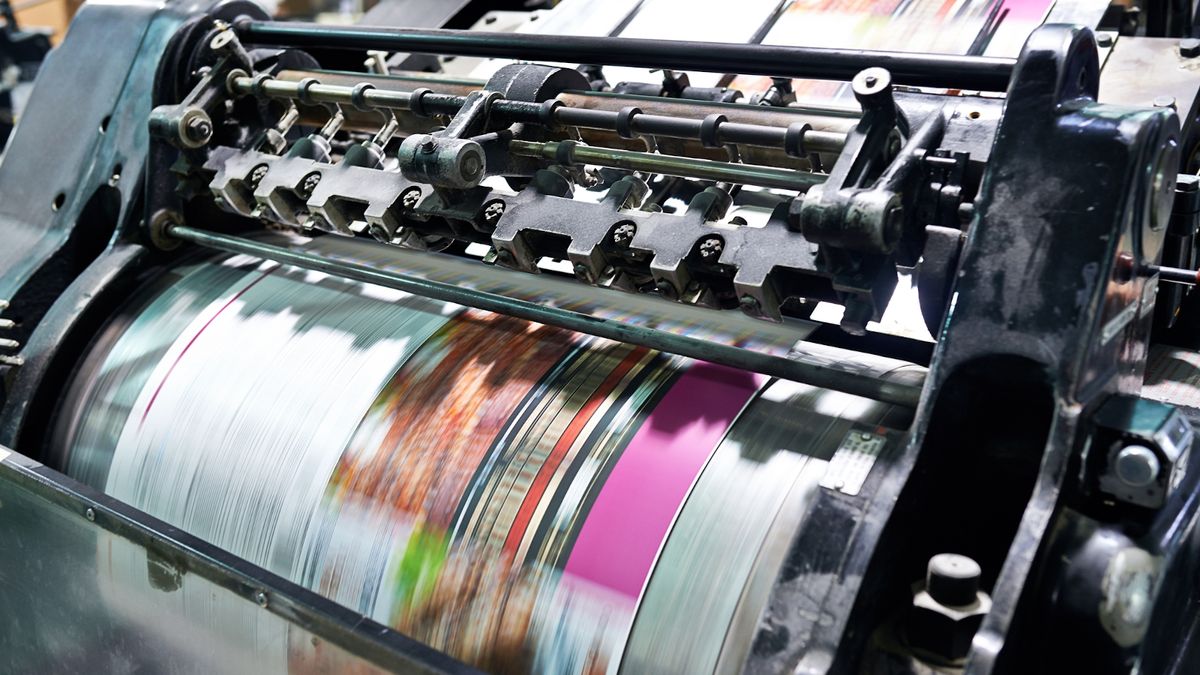The advantages of offset printing are numerous, making it a preferred choice for many modern businesses. As a seasoned method, offset printing provides high-quality prints and is incredibly efficient for bulk production. In the competitive world of business, understanding these advantages can unlock new avenues for marketing and branding. This article will explore the myriad benefits of offset printing and how it remains relevant in today’s digital age.

What is Offset Printing?
Offset printing is a widely used printing technique where the inked image is transferred (or ‘offset’) from a plate to a rubber blanket, then to the printing surface. This method is called offset because the ink is not directly transferred to the paper, which helps in achieving a clean and precise print.
History of Offset Printing
Offset printing has its roots in the early 20th century and has undergone significant advancements since its inception. Originally, it was developed to improve the quality and speed of printing, and today it is used extensively across industries.
How Offset Printing Works
The process involves creating plates, usually made of aluminum, which hold the image of the content. These plates are then transferred to a rubber blanket, and finally, the image is printed onto the paper. This indirect transfer process ensures that the prints are sharp and vibrant.
Key Advantages of Offset Printing
High-Quality Prints
One of the most significant advantages of offset printing is the superior quality it provides. The technique allows for finer lines and more accurate color reproduction, making it ideal for projects that require a professional finish.
Cost-Effective for Large Volumes
For businesses that need to print in bulk, offset printing is highly cost-effective. The initial setup cost may be higher compared to digital printing, but the cost per unit decreases significantly as the quantity increases. This makes it an economical choice for large-scale printing jobs.
Versatility with Different Materials
Offset printing is versatile and can be used on a variety of materials such as paper, cardboard, and plastic. This flexibility allows businesses to create diverse marketing materials like brochures, posters, and packaging.
Consistent High Image Quality
Another advantage is the consistency in print quality. Once the printing plates are set up, each print maintains the same high quality, ensuring uniformity across all materials.
Comparing Offset and Digital Printing
While digital printing is becoming more popular, offset printing remains the go-to for many businesses due to its benefits. To understand which method best suits your needs, it’s essential to compare the two. For further insights, you can explore this comparison of offset and digital printing.
When to Choose Offset Printing
Offset printing is ideal for projects that require high volume and superior quality. It is perfect for producing materials such as magazines, newspapers, and books where image quality and cost efficiency are paramount.
When to Opt for Digital Printing
Digital printing, on the other hand, is suitable for smaller runs and projects that require quick turnaround times. It is also more adaptable for personalized printing projects.
Environmental Considerations
Offset printing has made strides in becoming more environmentally friendly. Many printing companies now use soy-based inks and recycle aluminum plates, reducing their overall ecological footprint.
Recyclable Materials
Most materials used in offset printing are recyclable, which contributes to sustainability efforts. By choosing environmentally conscious printing companies, businesses can reduce waste and promote green practices.
Energy Efficiency
Modern offset printers are designed to be energy efficient, consuming less power compared to older models. This not only helps in reducing energy bills but also supports sustainable business practices.
Future of Offset Printing
Technological Advancements
The future of offset printing looks promising with continuous technological advancements. The integration of AI and IoT in printing technologies is set to revolutionize the industry. For more on this, check out how AI and IoT are impacting printing.
Offset Printing for Small Businesses
Offset printing remains a viable option for small businesses looking to produce high-quality marketing materials. By understanding the costs involved, businesses can make informed decisions about their printing needs.
Conclusion
The advantages of offset printing are clear, making it a valuable tool for businesses of all sizes. Its ability to deliver high-quality prints at an economical cost for large volumes makes it an enduring choice. As technology continues to evolve, offset printing is set to integrate seamlessly with modern business needs, ensuring its relevance in the future.

FAQs
1. What types of projects benefit most from offset printing?
Offset printing is best suited for large-scale projects that require high-quality prints, such as magazines, brochures, and books.
2. How does offset printing impact the environment?
Offset printing can be environmentally friendly when using soy-based inks and recyclable materials. Modern printers also consume less energy, contributing to sustainability.
3. Is offset printing suitable for small businesses?
Yes, small businesses can benefit from offset printing, especially for large quantities of marketing materials. The cost per unit decreases with larger volumes, making it economical.
This article contains affiliate links. We may earn a commission at no extra cost to you.







